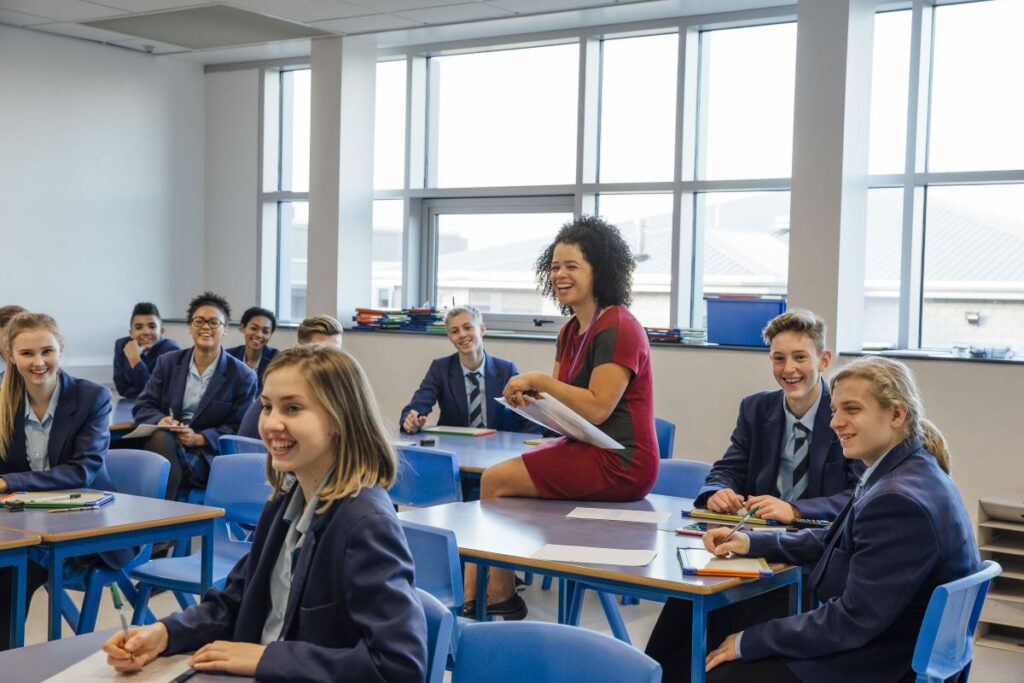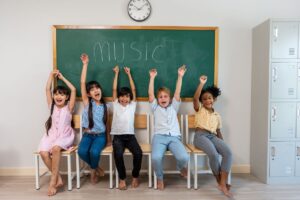The school year starts with a mixture of excitement and anticipation. For many of us, the first days are a blur of names, seating charts, and syllabus outlines. But as we stand at the front of a new group of students, the question that truly defines the year is not about academic standards or test scores.
It’s about how we, as educators, can build a strong, supportive classroom community where every student feels seen, valued, and empowered to learn.
It’s easy to focus on the technical aspects of teaching—the lesson plans, the rubrics, the data analysis. Yet, the true magic of education happens when we move beyond instruction and intentionally build a culture of belonging. Think of a classroom where students eagerly participate, not out of obligation, but because they feel safe to take risks and are confident that their classmates have their back.
This isn’t a happy accident; it’s a direct result of a teacher’s commitment to fostering a community. It’s the difference between a group of individuals sharing a space and a true team working toward a common goal.
Creating the Foundation: Trust, Empathy, and Shared Norms
A flourishing classroom community isn’t built on rules alone; it’s built on a foundation of mutual trust and empathy. This process begins on day one, not with a list of “do’s and don’ts,” but with collaborative norm-setting. Instead of imposing rules, guide students in creating a shared social contract.
Ask them what they need to feel safe, respected, and successful in the classroom. This simple act shifts the dynamic from one of compliance to one of co-creation, giving students genuine ownership over their environment.
- Practice Active Listening: Show students that their voices matter. When a student speaks, listen attentively without interruption. Model this behavior for them and encourage them to do the same for their peers.
- Establish a Restorative Mindset: When conflicts arise, avoid a punitive approach. Instead, use restorative questions to help students understand the impact of their actions and repair harm. For example, “What were you thinking at the time?” or “Who has been affected, and how can we make things right?” This teaches accountability and empathy rather than simply enforcing punishment.
We Are All Learners: Cultivating a Growth Mindset
A classroom community thrives when everyone, including the teacher, is a learner. This means modeling vulnerability and embracing mistakes as part of the learning process.
By openly sharing a time you struggled with a concept or made an error, you signal to students that it’s okay not to be perfect. This vulnerability dismantles the barrier between teacher and student, fostering a more genuine connection.
- Model Vulnerability: Share a personal anecdote about a time you made a mistake and learned from it. This simple act humanizes you and creates a safe space for students to take academic risks.
- Celebrate the Process: Shift the focus from a final grade to the effort and growth that led to it. Use phrases like, “Look at how much you’ve improved on this concept!” or “I love the questions you’re asking—they show you’re really thinking critically.” This validates effort and encourages perseverance.
Fostering Connection: The Power of Rituals and Routines
Daily rituals are the heartbeat of a classroom community. They provide predictability, build social-emotional skills, and offer consistent opportunities for connection. The competitor’s article rightly highlights the importance of morning meetings, but the power lies in the intentionality behind them.
- Morning Meetings and Check-Ins: Begin each day with a dedicated time for students to greet one another, share, and engage in a group activity. This structured social time allows students to connect as people before they connect as learners.
- Use Collaborative Activities: Incorporate routines like think-pair-share, jigsaw activities, and Socratic seminars. These structures require students to rely on one another, listen to diverse perspectives, and work collaboratively toward a shared understanding. These aren’t just instructional strategies; they are tools for building interdependency.
Inclusive Representation: Valuing Diverse Identities and Experiences
A truly inclusive community ensures every student sees their own identity reflected and celebrated. This goes beyond multicultural holidays; it involves consistently and authentically integrating diverse voices and perspectives into the curriculum.
- Diverse Books and Materials: Stock your classroom library with books featuring a wide range of characters, cultures, and experiences. Use texts and resources that represent various backgrounds and perspectives, ensuring students feel seen in their learning materials.
- Student-Led Content: Allow students to share their own stories, traditions, and lived experiences. This could be through a “Show and Tell,” an identity project, or by inviting students to teach the class about a topic they are passionate about. When students are empowered to share their own cultural capital, it validates their unique identity and enriches the entire community.
By intentionally focusing on these strategies, we move beyond simply managing a classroom. We create a place where students and teachers alike are invested in each other’s success and well-being.
The result is a classroom that isn’t just a space for learning but a true community—one that nurtures academic growth, fosters emotional resilience, and prepares students for a world that needs collaboration and empathy more than ever.
You’ve got important career goals — we have the graduate program to get you there. Check out our available graduate degree programs to advance your career today!




